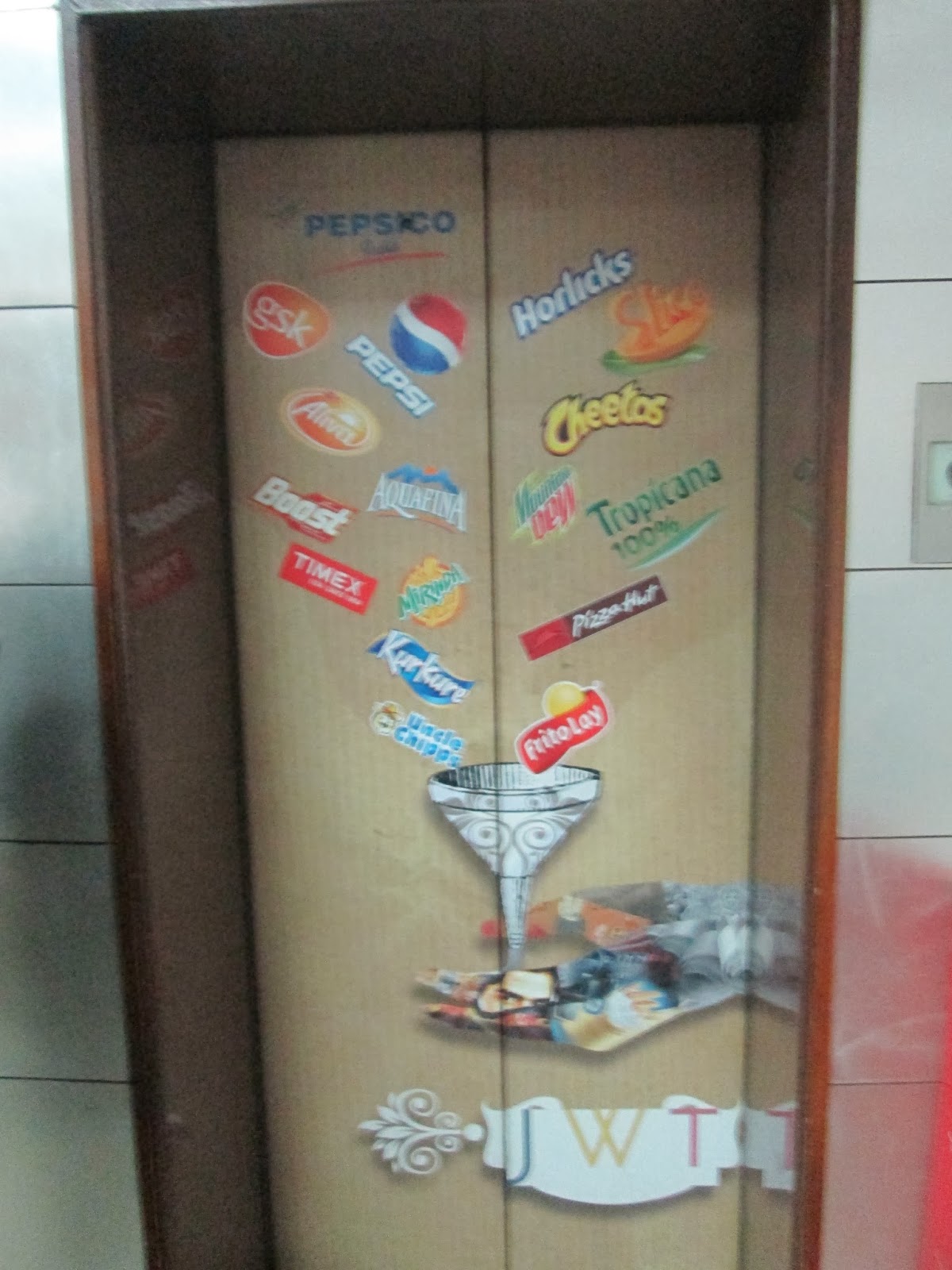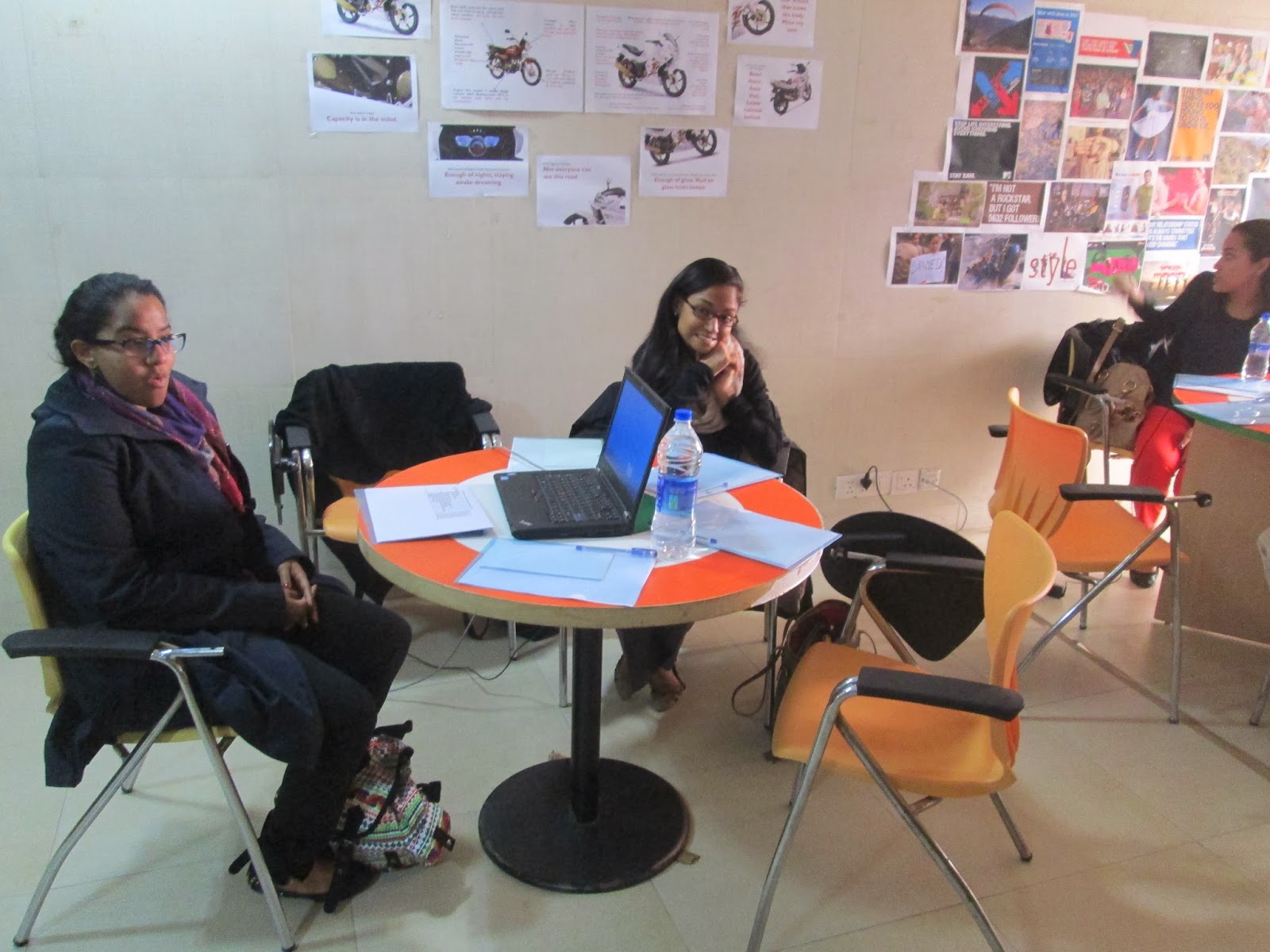Day 5: JWT
(Before reading, please be advised that this blog contains a few links to the commercials that were shown to us today. I have included the links because unfortunately I am unable to post the actual videos. Please watch the ads so that you can get a better sense of what we experienced; the ads are very short and won't consume too much of your time. Enjoy)
Part of our trip today consisted of meeting a marketing company called JWT.
(Some of the companies for which JWT India does marketing for.
The group we met today handles Frito Lays)
While visiting the company, we learned how advertisement has evolved in India and we also learned that India is a very hard market to tap into (if you don't believe me just ask KFC who failed in their first attempt in getting into the Indian market; coming back four years later with an entirely new menu and taste).
JWT showed us a few of the ads that were being published throughout the times. One of my favorite ads was called
The Tree which was put in place by a movement called the Lead India initiative. The message that was being taught to all of India was that as a nation, India had to stop taking a back seat to what was happening around them and instead help out, become leaders. Another ad that I really found enjoyable (and was created by JWT itself) was a
Nike ad which shows a group of men on top of cars and buses playing cricket in order to pass the time because of the traffic. In the way I have explained it, it sounds very simple but in reality it is not, it seems fun.
Among the other ads that were shown to us, there was one that was even seen negative by the marketing team because even though what was being shown in the ad was a relative ideal among the nation (or even world wide I might say), it was seen as offensive by all in the room. The ad was for a cream called
Fair & Lovely (while looking in the internet, I also found the male version ad for this
cream). The term fair in India means light skin. Lighter skin is seen as beautiful (an idea imposed by the British in India) and even though, the idea has tried to be pushed away by some, the desire to want fairer skin is still a wide spread belief. I can relate to this because in Dominican Republic, the lighter your skin, the better it is (it is a wide spread belief in my culture that the darker you are, the more mixed your family is with the Haitian nation and knowing about our history can explain why this is also kind of looked down on). I myself am darker in skin color but trust me, I wouldn't change that for the world. All in all, it is interesting to see how even though the general sense of the idea of being fair is there, there are many who are trying to change that but I believe it will take longer then expected to change this cultural belief.
A few of the thumb rules that we learned when advertising in India is that (1) everything here is about the added value of the product (2) when advertising, the ad must tap into "Indianism" (in simpler terms, into the India culture (3) products will have to be tweaked (ex: McDonald's with the vegetarian section) and (4) localization is key (whether it be macro or micro localization).
With this new understanding of how advertising and marketing are managed in India, we were put to the test. Every table (made up of 4 to 5 students) was given a company; we were given the task to promote the company in some way. My group consisted of Brittany, Jessica and Prof. Shah. The company we were given was Harley Davidson which in India is considered a luxury brand and is extremely expensive (the motorcycles are imported from America and tariffs are very high for imports here). To us, Harley Davidson represented freedom so we choose to create an ad that composed the sense of freedom and mileage (which is a very big deal in India) all in one. The ad idea we came up with started off by showing the snapshots of a father's daily activities (waking up, helping with the kids, going to work, etc). As this father comes home from work, he brings home some food and helps put down the kids, as the kids are in bed the dad takes the keys for his bike and is seen driving off (showing the ability for the Harley Davidson to give him a bit of freedom after a long day). At the end of the scene (while he drives off), the words "Dads go the extra mile" will appear in the screen (showing the mileage aspect of the Harley). If I say so myself, my group did an awesome job. :)
Below are some pictures of the JWT part of the day.
(The Pepsi Ad art work-full view and partial)
(Brandon, Grant, Gabe & Allen)
(Lauren, Patrick, Clarice & Chris)
(Kiara & Sean)
(Jessica & I)
(My other group member, Britney)
































